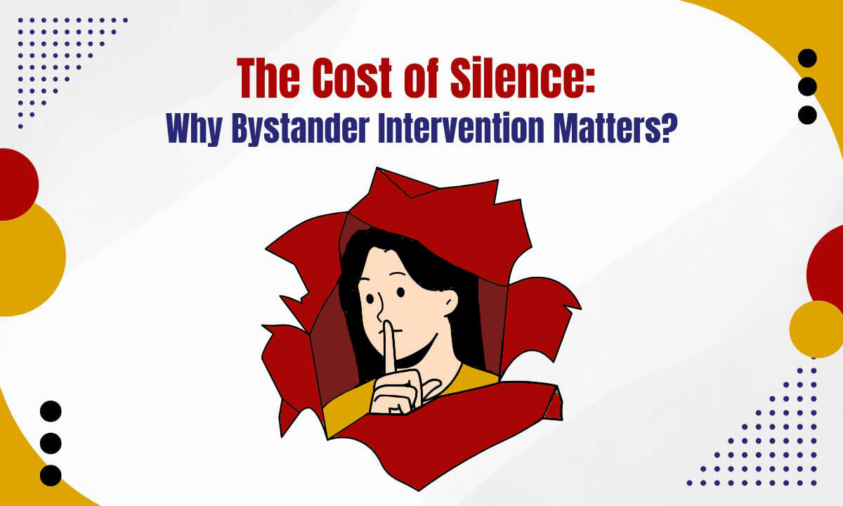The need for bystander intervention in today’s world has never been more critical. Many individuals find themselves in situations where they witness harassment, violence, or distress yet remain hesitant to act.
Being a bystander and not intervening during the incident is bad enough but rejecting an aggrieved woman who’s seeking help is outright cruel. And that’s what happened to the 15-year-old girl in Ujjain, where bystanders hesitated to call law enforcement and shooed away the teen when she sought help.
Several troubling incidents have occurred in Ujjain, including a case where a woman was assaulted on a road. Instead of stepping in to help, a bystander recorded the sexual harassment on their phone and shared the video on social media, where it rapidly went viral.
Last year around December, a video of a woman burning alive in the NYC subway went viral. The shocking video footage appears to show bystanders, and at least one police officer, watching or walking past as the woman was engulfed in flames inside the train.
The incident has sparked outrage and raised questions about public safety and the lack of intervention by those present.
Some speculate that fear of legal consequences, the “Daniel Penny effect,” may have contributed to the bystanders’ reluctance to help.
(the phenomenon where individuals hesitate to intervene in public emergencies or violent situations due to fear of legal repercussions, negative publicity, or personal harm)
Many instances happen in our daily lives where people hesitate to step in and offer help. As human beings, we sometimes struggle to take action when someone is in need.
This is called the Bystander effect.
A bystander effect is a social psychological theory that describes how people are less likely to help others when there are others around.
It’s natural to wonder if bystanders have ever successfully intervened in such situations and helped the people in need. Fortunately, the answer is yes.
An anonymous Reddit post explained how a father walked to the store with his 13-year-old son on a hot day and noticed a tiny baby left alone in a car. The windows were rolled up, and the heat worried him for the baby’s safety. While his son stood nearby, unsure of what to do, the father quickly decided to take action. He called the police for help and then broke the car window to rescue the baby. Carefully, he carried the baby into the store, determined to find the parents. He felt relieved that the baby was safe now.
The son shared in the Reddit post that the experience profoundly impacted him, inspiring him to be proactive in future situations instead of feeling paralyzed by confusion.
Another instance where an anonymous woman described her neighbor who aggressively approached young kids and older women on the street. He would yell profanities, make threatening gestures, and try to get too close. Tired of this behavior, the woman decided to act.
One day, when the neighbor started harassing an older woman walking her small dog, she approached him (keeping a distance of course) and told him to stop. She raised her voice, which surprised him, and he walked away. Since then, whenever he saw her, he would retreat to the safety of his house.
Another person shared his success story about intervening as a bystander at an eatery. A man went to a sandwich shop for lunch. While he was in line, he noticed a young couple at a nearby table arguing loudly. The man was yelling at the woman, and nobody budged.
When the man threw the woman’s bag across the room, the bystander decided to step in.
He walked over to their table with his arms crossed and waited for the woman to come back. Then, in a calm and direct voice, he asked, “Are you two going to be okay?” The man answered sheepishly, “Yeah.” The bystander replied, “Good,” and went back to his place in line. After getting his food, he sat at a nearby table with his back turned to the couple. This way, he could stay aware of the situation without being too confrontational.
Numerous stories exist of bystanders successfully intervening to stop harassment, but many remain untold. We can change this narrative by becoming active bystanders ourselves.
Rather than waiting for someone else to take action, let us be the first to step in and set an example for others. By intervening, when necessary, we can create a safer environment and inspire more people to do the same.
A lot of us envision bystander intervention as something scary we would do with angry strangers on the street, on a bus, or grocery store. And those instances are important.
Most opportunities, however, will arise in more familiar settings and involve people we know. People with whom we’ve some history and can often guess their reactions. And it’s great to learn and practice some skills to make your day-to-day living smoother and more peaceful.
If you want to train your employees with the skills to effectively intervene as bystanders, we can help. Contact us to learn about our customized training sessions at +919004521614 or [email protected].
Authored by Gomathi Sridevi Radhakrishnan, Content Writer Intern


 Cart is empty
Cart is empty 
